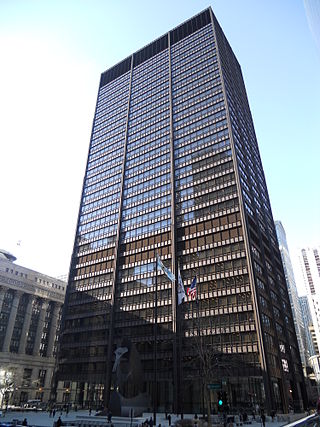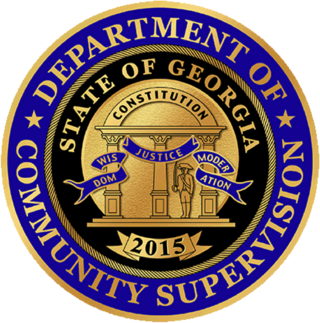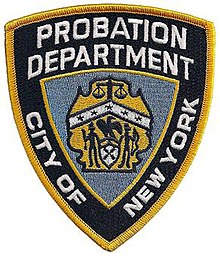Probation in criminal law is a period of supervision over an offender, ordered by the court often in lieu of incarceration.

Family courts were originally created to be a Court of Equity convened to decide matters and make orders in relation to family law, including custody of children, and could disregard certain legal requirements as long as the petitioner/plaintiff came into court with "clean hands" and the request was reasonable, "quantum meruit". Changes in laws and rules have made this distinction superfluous.
The Alaska Court System is the unified, centrally administered, and totally state-funded judicial system for the state of Alaska. The Alaska District Courts are the primary misdemeanor trial courts, the Alaska Superior Courts are the primary felony trial courts, and the Alaska Supreme Court and the Alaska Court of Appeals are the primary appellate courts. The chief justice of the Alaska Supreme Court is the administrative head of the Alaska Court System.

A probation or parole officer is an official appointed or sworn to investigate, report on, and supervise the conduct of convicted offenders on probation or those released from incarceration to community supervision such as parole. Most probation and parole officers are employed by the government of the jurisdiction in which they operate, although some are employed by private companies that provide contracted services to the government.

The Criminal Court of the City of New York is a court of the State Unified Court System in New York City that handles misdemeanors and lesser offenses, and also conducts arraignments and preliminary hearings in felony cases.

The California Department of Corrections and Rehabilitation (CDCR) is the penal law enforcement agency of the government of California responsible for the operation of the California state prison and parole systems. Its headquarters are in Sacramento.
The Law Enforcement Action Partnership (LEAP), formerly Law Enforcement Against Prohibition, is a U.S.-based nonprofit organization group of current and former police, judges, prosecutors, and other criminal justice professionals who use their expertise to advance drug policy and criminal justice solutions that enhance public safety. The organization is modeled after Vietnam Veterans Against the War. As of April 2017, they have more than 180 representatives around the world who speak on behalf of over 5,000 law enforcement members and 100,000 supporters.

The New York City Department of Correction (NYCDOC) is the branch of the municipal government of New York City responsible for the custody, control, and care of New York City's imprisoned population, housing the majority of them on Rikers Island. It employs 8,949 uniformed officers and 2,027 civilian staff, has 543 vehicles, and processes over 100,000 new inmates every year, retaining a population of inmates of between 3,000 and 6,000. Its nickname is New York's Boldest. Its regulations are compiled in title 39 of the New York City Rules.

The government of the U.S. State of Oklahoma, established by the Oklahoma Constitution, is a republican democracy modeled after the federal government of the United States. The state government has three branches: the executive, legislative, and judicial. Through a system of separation of powers or "checks and balances," each of these branches has some authority to act on its own, some authority to regulate the other two branches, and has some of its own authority, in turn, regulated by the other branches.
A presentence investigation report (PSIR) is a legal document that presents the findings of an investigation into the "legal and social background" of a person convicted of a crime before sentencing to determine if there are extenuating circumstances which should influence the severity or leniency of a criminal sentence. The PSIR is a "critical" document prepared by a probation officer via a system of point allocation, so that it may serve as a charging document and exhibit for proving criminal conduct. The PSIR system is widely implemented today.
The government of Virginia combines the executive, legislative and judicial branches of authority in the Commonwealth of Virginia. The current governor of Virginia is Glenn Youngkin. The State Capitol building in Richmond was designed by Thomas Jefferson, and the cornerstone was laid by Governor Patrick Henry in 1785. Virginia currently functions under the 1971 Constitution of Virginia. It is Virginia's seventh constitution. Under the Constitution, the government is composed of three branches: the legislative, the executive and the judicial.
The New York City Law Department, also known as the Office of the Corporation Counsel, is the department of the government of New York City responsible for most of the city's legal affairs. The department is headed by the Corporation Counsel, currently Sylvia Hinds-Radix, the 81st official to hold this position.

The Judiciary of New York is the judicial branch of the Government of New York, comprising all the courts of the State of New York.

The Circuit Court of Cook County is the largest of the 24 circuit courts in the judiciary of Illinois as well as one of the largest unified court systems in the United States – second only in size to the Superior Court of Los Angeles County since that court merged with other courts in 1998.
Law enforcement in New York City is carried out by numerous federal, state, city and private agencies. New York City has the highest concentration of law enforcement in the United States.

The Baltimore City Sheriff's Office is the law enforcement arm of the Circuit Court of Maryland, serving Baltimore, Maryland. The office is headquartered in Courthouse West of the Baltimore City Circuit Courthouses, which also serves as the sites for Baltimore City branch of the Circuit Court of Maryland.
The Judiciary of California or the Judicial Branch of California is defined under the California Constitution as holding the judicial power of the state of California which is vested in the Supreme Court, the Courts of Appeal and the Superior Courts. The judiciary has a hierarchical structure with the California Supreme Court at the top, California Courts of Appeal as the primary appellate courts, and the California Superior Courts as the primary trial courts.

The Georgia Department of Community Supervision (DCS) is an executive branch agency of the U.S. state of Georgia. DCS is headquartered in the James H "Sloppy" Floyd Veterans Memorial Building with additional field offices throughout the state. DCS is tasked with: the supervision and reentry services of felony probationers and parolees; the oversight of adult misdemeanor probation providers; and, provides administrative support to the Georgia Commission on Family Violence (GCFV).

The Ghanaian juvenile justice system encompasses the processes to handle minors who are in conflict with the law or who are in need of care and protection. The formal Ghanaian juvenile justice system was created under colonial rule and has evolved greatly since the early 1900s. Three stark changes for the system are throughout the colonial period, the beginnings of independence and the 1960 Criminal Procedure Code, and the newest Juvenile Justice Act.










